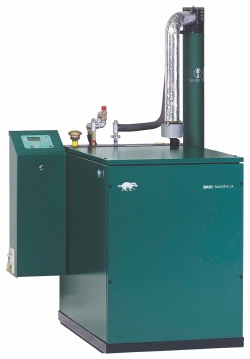Ensuring a successful outcome for a CHP project

Electricity as a by-product of heat from CHP plant, or vice-versa, makes for very efficient use of fuel. Unfortunately, incorrect sizing can seriously damage the potential for cost savings. David Shaw of Baxi Commercial offers his top tips on specifying CHP.
CHP (combined heat and power) works best in applications with continuous heating or hot-water loads. The longer a CHP system runs to meet heating demand, the more efficient it is. To get the best return on investment, CHP should run for at least 4000 h per year.
Size matters: Specifying the correctly sized unit for installation is crucial. This will ensure that the CHP engine runs for as long as possible, which in turn generates valuable low-carbon and low-cost electricity. Ideally, the CHP system should be sized to around 15% of the maximum heat demand, so that it is capable of meeting a building’s base-load requirements on its own or be able meet daily hot-water requirements when there is no heating load. This approach maximises the potential for generating electricity.
There’s no such thing as ’10% for luck’: One of the main issues with underperforming CHP is over-sizing, so users have a larger plant than necessary. This inhibits the engine from continuously working to generate low-cost electricity. A bigger plant does not mean better performance. On the contrary, it can actually lead to lower savings. Oversized units do not have the demand to run continuously, so the amount of electricity produced will be well below the customer’s expectations.
Small is beautiful: To work effectively, CHP needs to be as small as possible. Multi-module CHP units offer a versatile solution for various sized applications, particularly as they can be used in cascade to meet the demands of larger properties when required. The closer you can match the user’s demands to the capabilities of the CHP, the better the efficiencies achievable.

Do your homework: Ensuring that you cover off all of these points effectively relies on making sure a building’s energy and power audit is correct in the initial stages. Determining the specific energy load and demand of each individual building is key to specifying and installing correctly sized CHP. It is important to remember that there is no straightforward way to size CHP, and it is always better to get advice from the CHP supplier at an early stage of design.
Check for incentive schemes: Installations which deliver good paybacks and substantial CO2 savings are likely to comply with the CHPQA Quality Index (link below), which will qualify them for incentives such as Enhanced Capital Allowances (ECA), to further improve their returns. It’s always worth checking this on installation to help deliver even greater savings for your customers.
David Shaw is business development manager with Baxi Commercial.







